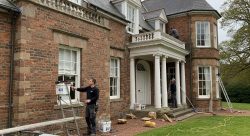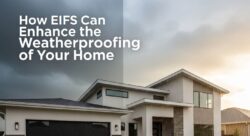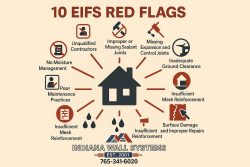Optimizing Durability and Efficiency in Exterior Insulation and Finish Systems
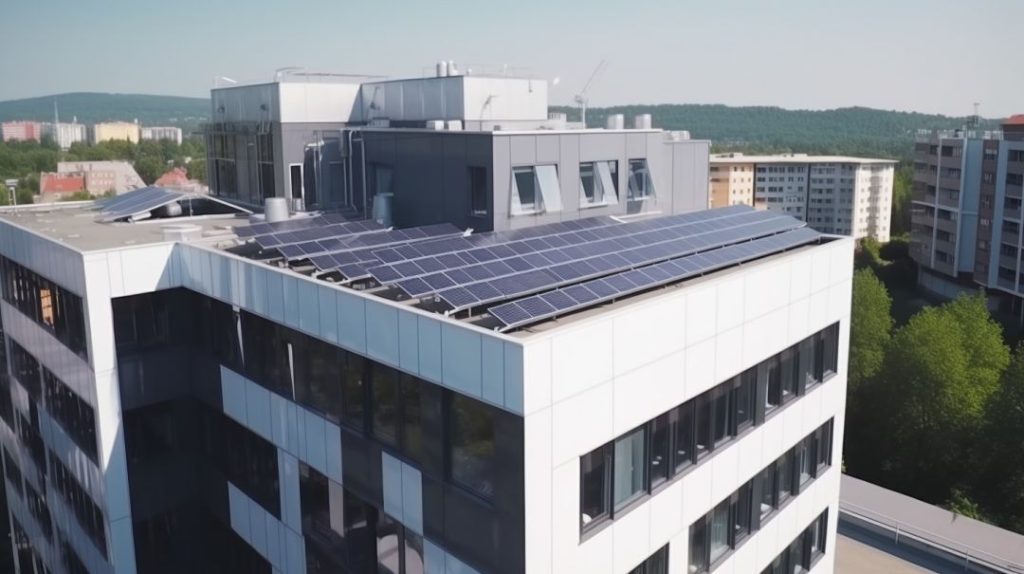
—
| Key Takeaways |
|---|
| Proper building enclosure design requires managing heat, air, moisture, and loads as an integrated system. |
| EIFS can address many modern performance objectives like drainage, air barriers, impact resistance, and continuous insulation. |
| Implementing EIFS successfully depends on proper detailing, workmanship, and integration with adjacent materials. |
| Enclosure testing and verification through air barrier testing and thermal imaging ensures quality. |
| Ongoing education on building science principles and manufacturer partnerships helps optimize EIFS capabilities. |
A building’s envelope plays a crucial role in its performance, durability, and energy efficiency. As exterior insulation and finish systems (EIFS) have evolved, they have become a popular choice for creating high-performance building enclosures. However, proper design and installation are imperative to realize the full benefits of EIFS. This article explores strategies and best practices for leveraging EIFS to achieve enduring, efficient, and cost-effective building envelopes.
The building envelope acts as the separator between conditioned interior space and the exterior environment. It must control heat, air, and moisture flow while withstanding structural and environmental loads. With rising energy costs and a growing focus on sustainability, building envelopes have become a priority in construction and renovation projects. EIFS offers a versatile cladding solution that can address many modern performance requirements when implemented correctly.
We will examine the core principles of building enclosure design and detail the role EIFS can play in executing them effectively. Topics covered include enclosure typologies, drainage, impact resistance, continuous insulation, air barriers, testing, and material selection. Additionally, tips for improving energy efficiency, strategies to minimize costs, and resources for further education will be provided. Properly leveraging EIFS involves understanding both the art and science behind high-performance envelopes. With the right knowledge, building professionals can fully capitalize on EIFS and related best practices to create structures with enduring integrity.
The Principles of Building Enclosure Design
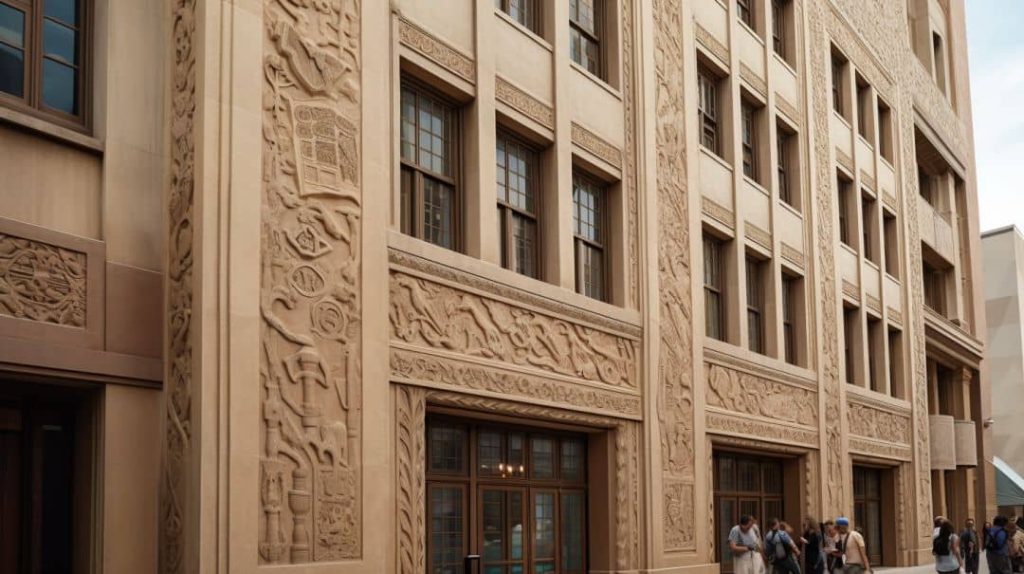
The design of high-performance building enclosures is based on several core principles. Understanding these fundamentals is key to leveraging EIFS effectively.
Separator vs Moderator
The building enclosure can act as either a separator or moderator. As a separator, the enclosure keeps interior and exterior environments completely isolated. As a moderator, it allows some level of controlled interaction between inside and outside. Modern enclosure design focuses on striking the right balance as a moderator to manage heat, air, and moisture flow.
Design, Materials, and Workmanship
The quality of the building enclosure is determined by design, materials selection, and workmanship. Attention to detail in all three areas is required to achieve desired performance targets. This encompasses both product specifications and proper installation.
Physical Phenomena
Building enclosures must withstand various physical phenomena:
- Structural loads
- Thermal effects
- Air pressure differentials
- Moisture migration
- Sound transmission
- Fire spread
- Seismic effects
- Electrical forces
- Solar radiation
Controlling these physical forces is a primary function of the enclosure.
Intensity, Duration, and Frequency
The impact of physical phenomena is dependent on their:
- Intensity – the magnitude of the force
- Duration – the length of exposure
- Frequency – how often the exposure occurs
Enclosure design should be based on maximum expected intensities, durations, and frequencies for the structure’s location and lifetime.
Risk and Consequences
The overall risk posed by physical forces is determined by both the likelihood of a given exposure and its potential consequences if unchecked by the enclosure. Design priorities and required resilience are set accordingly.
| Risk Priority Matrix | Potential Consequences |
|---|---|
| Low Likelihood + Minor Consequences | Acceptable level of risk |
| High Likelihood + Minor Consequences | Medium level of risk |
| Low Likelihood + Major Consequences | Medium level of risk |
| High Likelihood + Major Consequences | High level of risk |
Higher risk areas become top priorities for enclosure design.
Durability and Redundancy
To manage risk, building enclosures should provide both durability and redundancy. Durability involves resisting damage, while redundancy provides backup protection in case primary defenses fail.
This layered approach is the hallmark of robust enclosure design.
Continuity
Continuity is another fundamental principle of high-performance enclosures. The entire enclosure should act as a continuous barrier able to withstand structural loads, control heat flow, and resist air and moisture penetration.
Any gaps, seams, intersections or penetrations in the enclosure present potential weaknesses. Careful detailing and sealants are required to maintain continuity. EIFS offers continuous insulation and can integrate various accessories to bridge transitions.
Buildability and Economy
Enclosure design must balance performance with practical buildability and economy. Over-engineering may result in impractical construction requirements or unnecessary expense. An optimized design provides the required resilience at the lowest cost and complexity.
Factors like construction sequencing, coordination with other trades, and integration of prefabricated components impact buildability. Good design recognizes these logistical constraints.
Building Enclosure System Integration
The enclosure includes the exterior cladding, water-resistive barrier, air barrier, vapor control, insulation, and all connections and transitions between them. Design must address the enclosure as an integrated system.
Individual components must work together to provide continuity. For example, a high-performance EIFS cladding relies on proper detailing at windows, doors, and roof connections to perform as intended.
Climate, Exposure, Occupancy, and Building Energy Profile
Design priorities and material selection should be based on:
- Local climate and weather exposure
- Building occupancy type and use patterns
- Heating, cooling, and ventilation loads
For instance, buildings in hot climates need increased solar reflectance, while those in cold climates require maximum insulation. Care facilities may prioritize airtightness and controlled ventilation. Analyzing the specific context is crucial.
Taken together, these principles provide a framework for enclosure design using EIFS and other high-performance materials.
Understanding the Art and Science of EIFS
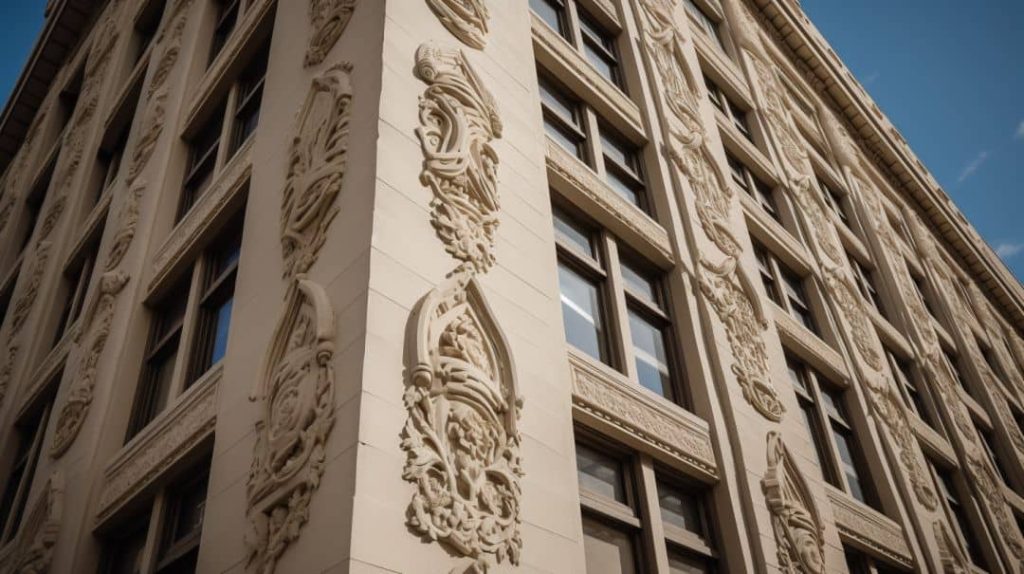
EIFS provide a versatile exterior cladding solution, but proper implementation requires both art and science. Key factors to understand include:
EIFS Components
EIFS comprise multiple layers that work synergistically:
- Adhesive – Bonds system to substrate
- Insulation Board – Provides continuous insulation
- Base Coat – Reinforces and levels surface
- Reinforcing Mesh – Adds impact resistance
- Finish Coat – Determines color and texture
- Sealants – Maintain air and moisture control at connections
Benefits
- Continuous insulation improving energy efficiency
- Design flexibility with a variety of finishes and aesthetics
- Lightweight construction
- Accelerated installation compared to other claddings
- Integral water-resistive barrier within some systems
- Air barrier continuity
- Sound attenuation
- Fire resistance
Limitations
- Requires careful detailing and workmanship for moisture management
- Not suitable for every climate and exposure
- Impact resistance varies based on system selected
- Higher upfront cost than some claddings
Best Practices
- Follow manufacturer specifications for components and installation
- Pay close attention to details and transitions
- Test for air and water leaks during construction using AAMA standards
- Inspect and repair any damage that occurs prior to finishing
- Maintain sealants and coatings throughout building lifespan
By combining understanding of EIFS attributes with fundamental enclosure design principles, building professionals can fully leverage these systems.
The key is applying both artful design for aesthetics and performance as well as scientific rigor in enclosure detailing and testing. This holistic mastery of EIFS allows for the creation of more efficient, resilient, and cost-effective building envelopes.
Building Enclosure Design Strategies
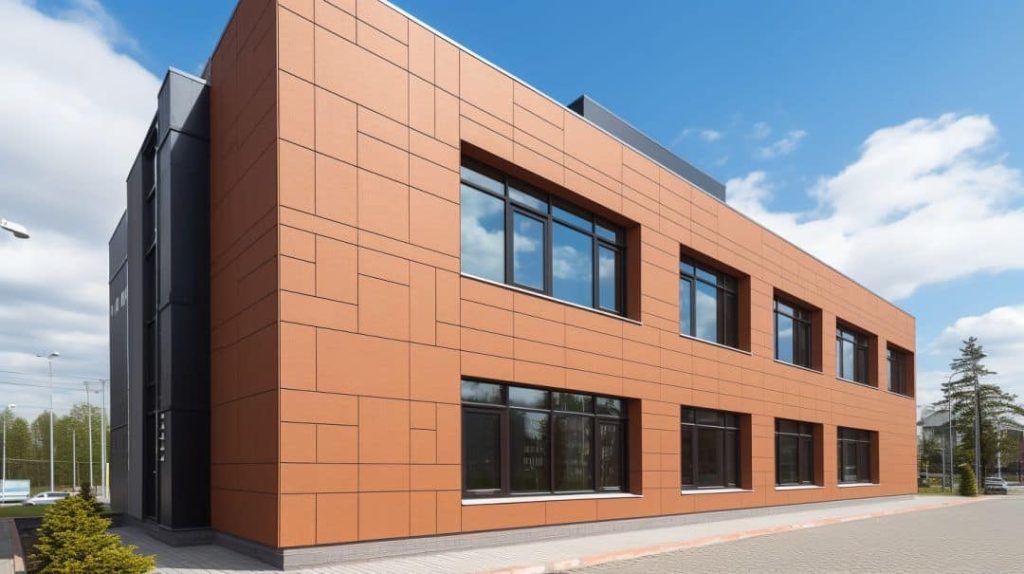
Applying fundamental enclosure principles involves selecting from various design strategies and technologies. Key options to consider include:
Building Enclosure Typologies
Primary types of wall assemblies include:
- Mass Walls – Heavyweight concrete or masonry
- Steel Stud Walls – Insulated lightweight metal framing
- Wood Stud Walls – Insulated lightweight wood framing
Mass walls provide thermal mass but require additional insulation. Lightweight stud walls allow more insulation but less thermal mass.
Hybrid solutions combine mass walls and stud walls to optimize energy performance. For example, a concrete interior wythe, exterior continuous insulation, and EIFS cladding.
Drainscreens, Rain Screens, and Enclosure Fundamentals
Drainage and drying potential are central to moisture control. Strategies include:
- Drainscreen EIFS – Adds a drainage layer behind the insulation
- Rain Screen EIFS – Creates an air gap between cladding and drainage surface
These approaches enhance water management capabilities. Proper detailing and maintenance is still required.
Importance of Reinforcement Mesh in EIFS Stucco Systems
Alkali-resistant fiberglass reinforcement mesh embedded in the EIFS base coat significantly improves impact resistance and resilience. This added durability and redundancy enhances risk management.
Mesh selection should be based on impact testing criteria for the project location.
Incorporating Air and Moisture Barriers
Layered defenses manage both liquid water and vapor penetration:
- EIFS Continuous Insulation – Acts as moisture barrier
- Water-Resistive Barrier Underneath – Provides drainage and drainage
- Interior Vapor Retarder – Controls diffusion through walls
- Complete Air Barrier – Eliminates uncontrolled air leakage
This redundancy improves performance and moisture resilience.
Leveraging strategies like these allows EIFS and related technologies to meet modern enclosure goals.
Secret to a Perfect EIFS Finish

Achieving a flawless, resilient EIFS finish requires attention to detail in product selection, proper installation steps, and long-term maintenance. The key factors include:
Base Coat and Reinforcing Mesh
- Use manufacturer approved base coat material compatible with insulation board and finish coat
- Embed alkali-resistant fiberglass reinforcing mesh into base coat according to specifications
- Ensure full contact between mesh and base coat to prevent voids
- Feather seams and avoid wrinkles in mesh for optimum performance
- Allow proper curing time before applying finish coat
Finish Coat Material
- Select finish compatible with base coat, substrate, and environmental exposure
- Consider specialized options like silicone-enhanced finishes for added durability and water resistance
Application Techniques
- Maintain required ambient temperature during installation
- Use clean tools and follow all mixing instructions
- Apply an even, consistent thickness of finish coat
- Keep a wet edge between batches to prevent cold joints
- Execute any special texturing uniformly across the wall surface
- Cure finish coat fully before exposing to rain or freezing temperatures
Ongoing Maintenance
- Inspect finish coat annually for cracks, damage, or deterioration
- Repair issues immediately to prevent water intrusion
- Clean finishes regularly using low-pressure wash and mild detergents
- Check sealants around openings and penetrations to maintain airtightness
- Recoat finish after 10-20 years depending on performance and exposure
- Adjust maintenance frequency based on environmental conditions and appearance
Achieving EIFS finish coat perfection requires meticulous installation combined with vigilant lifetime care. But the resulting performance and aesthetics are well worth the effort.
Following these best practices allows the full benefit of EIFS cladding systems to be realized. Using the right materials and techniques, building professionals can consistently achieve durable, resilient, and attractive EIFS finishes that protect the building over its entire lifespan.
Tips for Energy-Efficient Building Envelopes
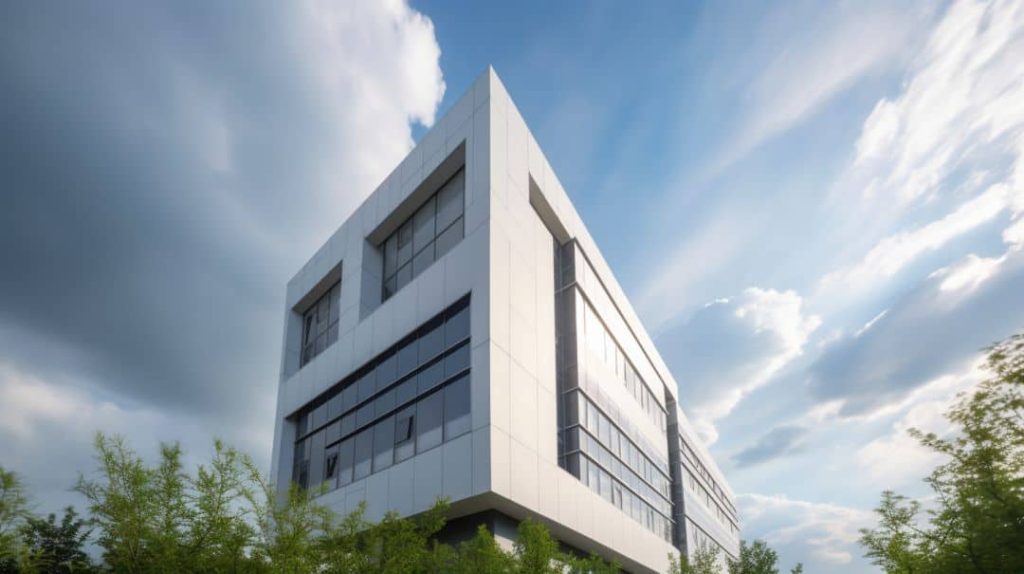
Achieving optimal energy efficiency requires a comprehensive envelope strategy. Key tips across various assembly elements include:
Optimizing Frame Design and Adding Insulation
- Use advanced framing techniques like 2-stud corners and stacked headers to minimize thermal bridging
- Prioritize proper installation of cavity insulation, ensuring complete fill with no gaps or compression
- Supplement cavity insulation with continuous exterior insulation using EIFS or rigid boards to reduce thermal bridging through framing
- Model heat loss through various envelope assemblies and identify areas for improvement
Using Larger Framing Dimensions
- Specify 2×6 studs at 24″ on center spacing or 2×8 studs at 16″ spacing instead of 2×4 framing
- The wider cavities and reduced framing fraction allow for thicker cavity insulation up to R-30 or more
- This reduced thermal bridging through wood studs improves overall R-value
Installing Interior and Exterior Air Barriers
- Apply airtight interior air barrier such as taped and sealed drywall
- Couple with exterior air barrier such as fully adhered membrane under cladding
- Connect the interior and exterior barriers thoroughly at transitions, penetrations, and perimeter
- Continuity of air barriers is crucial to minimize infiltration heat loss/gain
Proper Attic Insulation and Air Sealing
- Install baffles at eaves to maintain ventilation yet prevent wind washing of insulation
- Use raised heel energy trusses to allow extending attic insulation to full depth along exterior walls
- Seal and insulate any attic hatches/stairs for complete air barrier
- Plug any ceiling electrical or plumbing penetrations with spray foam or caulk
Utilizing Capillary Breaks and Air Seal Gaskets
- Incorporate plastic or metal flashing at transitions to interrupt upward moisture drive
- Use minimally expanding closed-cell spray foam as air barrier and vapor retarder
- Carefully seal wired glass windows with butyl/polyisobutylene glazing tape
Ensuring a Tight Seal Throughout the Structure
- Caulk bottom plate, header, and sill plate junctions with framing
- Apply fluid-applied or membrane air barriers to CMU block walls
- Use acoustical sealant to minimize leakage at electrical/HVAC boxes and fixtures
Minimizing Openings for Mechanicals
- Coordinate HVAC, plumbing, electrical to align runs and consolidate penetrations
- Limit opening sizes to only required clearances, not oversized gaps
- Cluster utilities into central mechanical cores rather than dispersed random openings
Creating a Gap Between Interior Framing and Exterior Walls
- Install 1″ furring strips or rainscreen insulation standoffs on exterior sheathing
- Allows drainage and drying of any moisture in wall cavity to exterior
- Essential for managing moisture if using vapor-impermeable rigid foam sheathing
Careful detailing at every interface allows the building enclosure to operate as an integrated system.
Testing and Verification for Building Envelopes

Testing and inspection protocols are critical for quality assurance and performance verification of building enclosures. Key methods include:
Conducting Air Barrier Testing
- Perform whole-building air barrier testing per ASTM E779 standard test method
- Use a blower door to pressurize or depressurize the building to 50 Pascals of pressure difference
- Measure the air leakage rate (cfm) at this 50 Pa pressure differential using a multi-point test
- Target a maximum leakage rate of 0.25 cfm/sq ft at 50 Pa for a rigorous air barrier
- Test at both rough-in stage and after insulation/drywall to evaluate air tightness of individual components and connections
- Diagnose any leakage sites and rectify deficiencies before closing up assemblies
- Retest after repairs to verify performance targets are achieved
Completing Energy Star’s Thermal Bypass Checklist
- Perform systematic inspection for thermal bypass issues using Energy Star’s checklist
- Document proper air sealing details and insulation alignment at key areas:
- Walls – plumbing, electrical, HVAC penetrations
- Windows and doors – shim space sealing, closed-cell foam at jambs
- Attic planes – hatch, knee wall, ducting, and penetration sealing
- Rim/band joists – complete cavity insulation fill
- Foundations – seal bottom plate to concrete, slab edge insulation
- Ducts – sealed boot connections, penetration seals
- Correct any thermal bypass deficiencies before enclosing assemblies
- Retest problem areas to verify heat loss paths have been mitigated
Thorough testing and inspection at each stage of construction provides quality assurance and reduces performance gaps between building science principles and actual installed conditions.
Considering Whole Building Energy Efficiency
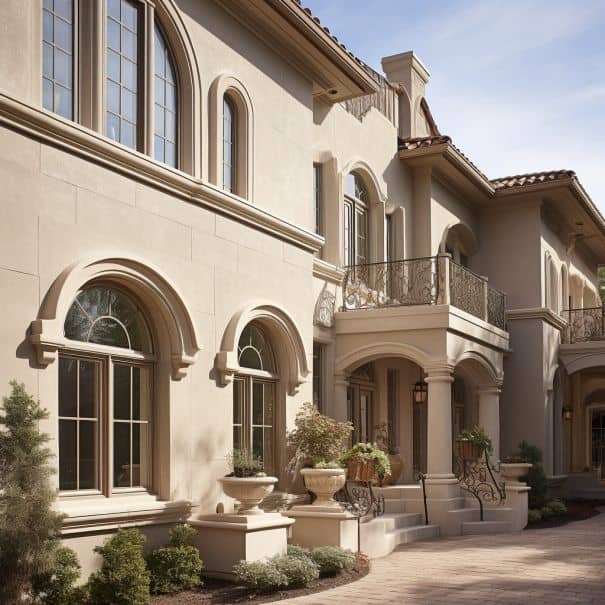
A holistic perspective is necessary to optimize total building energy performance. This involves Strategies such as:
Integrative Design Process
- Assemble all project stakeholders early for collaborative goal setting
- Model interactions between building systems to identify synergies
- Simulate performance of envelope, HVAC, lighting etc. in tandem
- Refine designs using iterative energy modeling to reduce loads
High Efficiency HVAC
- Right-size HVAC systems based on reduced envelope loads
- Install high SEER units
- Adopt heat recovery ventilation to conserve energy
- Choose gas heating systems with ≥95% AFUE rating
- Place ducts within conditioned space
Advanced Lighting Design
- Use LED lighting throughout
- Incorporate lighting controls – occupancy, daylight responsive
- Minimize over-lighting of spaces through careful planning
- Consider task lighting to allow lower ambient light levels
Renewable Energy Integration
- Evaluate potential for on-site solar PV or solar hot water
- Analyze viability of ground-source heat pump systems
- Purchase renewable Energy Certificates to offset usage
- Connect to district heating/cooling systems if available
Performance Tracking
- Monitor energy use intensity metrics after occupancy
- Perform regular re-commissioning to optimize operations
- Update models with actual performance data for future projects
Pursuing synergies across all building systems is key to maximizing energy savings in enclosure design. EIFS and other envelope technologies work together with HVAC, lighting, and renewables to achieve net zero energy use.
Minimizing Costs with Advanced Framing Techniques
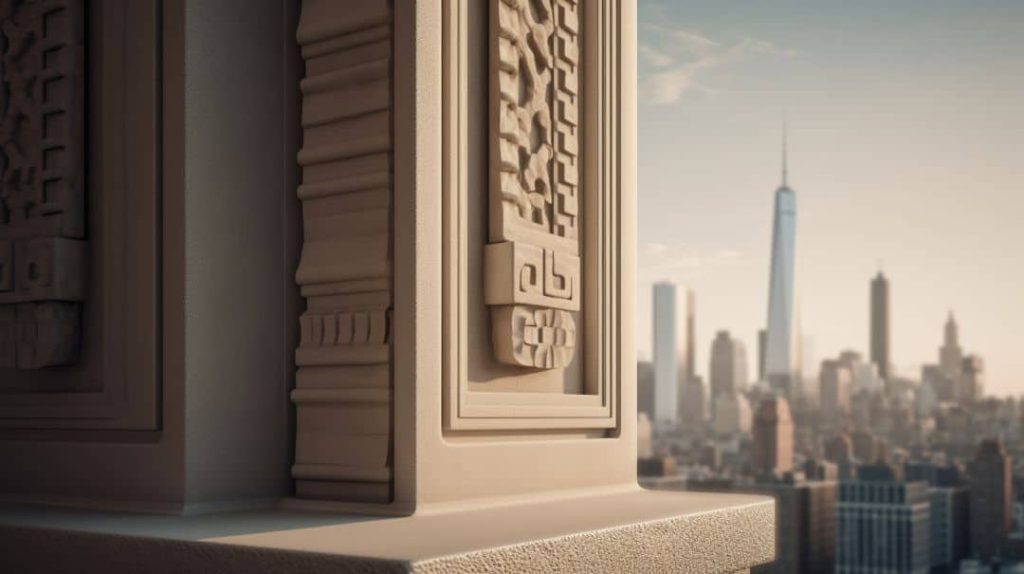
Advanced framing employs optimized design and construction methods to reduce materials use and labor while maintaining structural integrity. Key techniques include:
Two-Stud Corners
- Use drywall clips or plywood gussets instead of studs at corners
- Saves time and one stud per corner
- Must maintain shear strength through proper nailing and fasteners
Stacking Headers
- Align window and door headers vertically where possible
- Allows using one header for multiple openings
- Saves time and lumber
In-Line Framing
- Vertically align studs with headers and sills above/below
- Reduces need for jack studs and cripples
- Maximizes cavity insulation coverage
Using Pre-Cut Studs
- Order studs pre-cut to exactly required lengths
- Avoids discarding scrap pieces from field-cutting
- Yields less waste material to haul off-site
Spray Foam Insulation
- Apply minimally expanding foam insulation
- Foam seals cracks and forms its own rigid air barrier
- Allows leaving out separate labor-intensive air sealing step
Panelized Construction
- Prefabricate wall panels offsite in controlled environment
- Fast assembly on-site by craning panels into place
- Saves labor time through assembly line production techniques
Optimized Framing Layout
- Carefully space and align studs for windows, corners, etc.
- Minimizes excess framing members not structurally required
- Reduces thermal bridging through framing
Using Metal Framing
- Specify light-gauge steel framing instead of wood
- Consistent quality, won’t warp or rot
- Thinner profile enables more insulation cavity space
Adopting these techniques systemically across large projects can yield significant upfront capital savings through efficiency gains. The envelope design should integrate advanced framing considerations from the earliest stages to fully capitalize on the benefits.
Addressing Modern Building Envelope Goals with EIFS

EIFS provide versatile cladding solutions that can meet a wide range of contemporary performance requirements for building enclosures. Key capabilities include:
Drainage Solutions
EIFS offers multiple design options to manage moisture:
- Drainable EIFS adds a drainage plane that directs water downward and out. This enhanced water management is suitable for stringent exposure conditions.
- Rainscreen EIFS incorporate an air gap between the drainage surface and insulation to encourage drying.
- Careful detailing and flashing is still required for moisture control with any drainage approach.
Integrating Air and Water Resistive Barriers
- Self-adhering vapor permeable air barriers can be fully incorporated behind EIFS insulation boards.
- The EIFS base coat also acts as a water-resistive barrier.
- Water management and airtightness are addressed in tandem.
Impact Durability
- Glass fiber reinforcing mesh embedded in the EIFS base coat significantly enhances impact resistance.
- Mesh weight and strength can be specified appropriately for given project exposures.
- Impact testing verifies resilience requirements are met.
Options for Continuous Insulation
- EIFS provide continuous insulation over framed walls, reducing thermal bridging.
- Insulation thickness from 1 to 4 inches accommodates a broad range of R-value targets.
- Insulation material choices include EPS, XPS, polyiso, mineral wool.
Performance Testing and Verification
- EIFS assemblies can be tested per AAMA 508 standards for water penetration resistance.
- Air barrier testing verifies airtightness during construction.
- Thermal imaging and R-value measurement confirm insulation installation quality.
EIFS capabilities align well with key facade performance objectives, allowing innovative enclosure solutions.
By leveraging the flexibility and integrative strengths of these systems, architects and builders can achieve new levels of building envelope energy efficiency, durability, and functionality using proven technology.
Benefits of Choosing High-Quality Materials for Building Envelopes
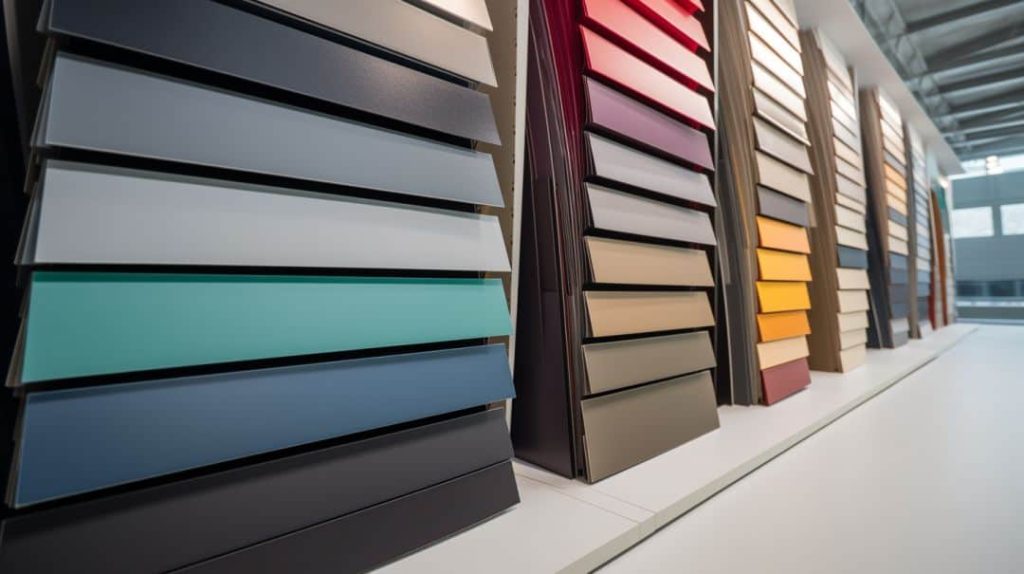
Selecting top-tier components for the enclosure pays dividends in terms of lifecycle performance, durability, and avoided replacement costs. Key advantages include:
Enhanced Lifespan
- Premium materials withstand UV, moisture, and mechanical damage.
- For example, silicone-enhanced finishes resist cracking and fading.
- High-grade windows and doors maintain seals, thermal resistance, and operation.
Improved Energy Efficiency
- Advanced insulation materials like aerogel provide maximum R-value in thin profiles.
- Thermally broken framing systems minimize conduction losses.
- Airtight components prevent energy waste from infiltration.
Simplified Maintenance and Repair
- Robust materials stay in good condition longer before needing repair.
- Compatible coating systems enable easy recoating.
- Modular facade systems allow replacing only damaged components.
Moisture Protection
- Water-shedding surface coatings prevent liquid water intrusion.
- Vapor variable membranes balance drying and control.
- Flashing materials won’t corrode or degrade prematurely.
Fire Safety
- Noncombustible exterior cladding prevents flame spread.
- Intumescent coatings or wraps expand to provide firewall protection.
- Fire-rated windows maintain compartmentalization.
Acoustical Control
- Sound-dampening insulation absorbs noise transmission.
- High STC glazing reduces outdoor noise levels indoors.
- Airtight construction contains HVAC system noise.
Capital Cost Savings
- Higher upfront material cost is offset by savings from:
- Faster, simpler installation
- Avoiding frequent replacements
- Lower maintenance expense over time
- Reducing energy consumption long-term
Quality materials elevate building performance and economics when lifecycle factors are considered. The extended durability and technical capabilities justify the initial investment.
Resources for Mastering EIFS and Building Envelopes

Many excellent resources are available for further education on enclosure design and EIFS best practices, including:
Publications and References
- ASHRAE Handbook – Fundamentals Chapter on Heat, Air and Moisture Control in Building Assemblies
- Building Enclosure Design Guide from WBDG
- Building Science Digests from Building Science Corporation
- Guidelines for Building Envelope Design and Construction from RDH Building Science
- Modern Builder’s Guide to Water Management Details from Building Science Press
WBDG Participating Agencies
- National Institute of Building Sciences Whole Building Design Guide
- Department of Energy Building Technologies Office
- National Institute of Standards and Technology
- General Services Administration Public Buildings Service
These agencies provide a wealth of technical resources and best practice guidance.
Additional Training and Education Opportunities
- Building Enclosure Councils offer seminars and educational materials in many major cities
- American Institute of Architects Continuing Education System courses
- Building science degree programs at universities
- Manufacturer training programs on product-specific building enclosure details
- Online learning resources from building product manufacturers
Gaining a deeper understanding of fundamental building science principles and enclosure design strategies is instrumental for achieving high-performance, cost-effective designs using EIFS.
Conclusion
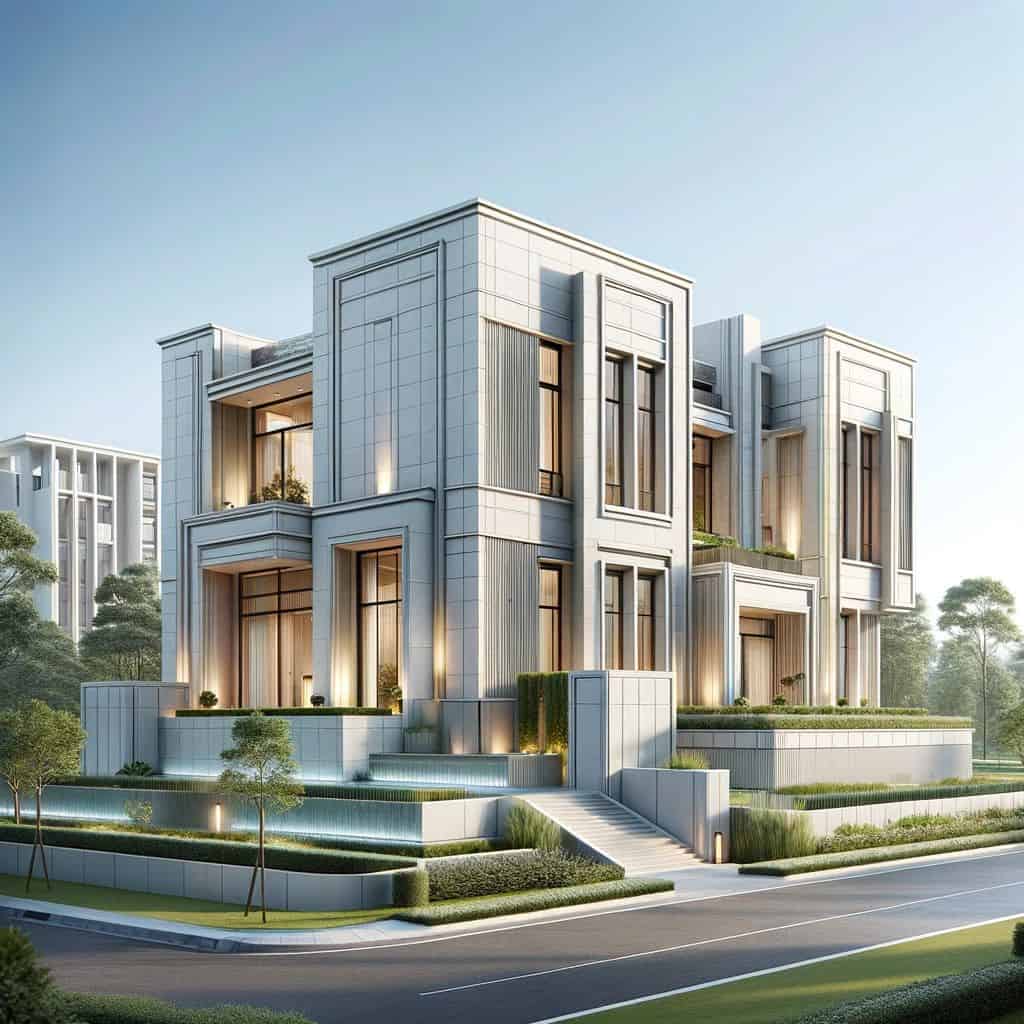
Implementing robust and efficient building enclosures is more important than ever given rising energy costs and the imperative for sustainable construction. Exterior insulation and finish systems provide a versatile cladding solution to meet contemporary performance goals when thoughtfully integrated with fundamental enclosure design principles.
EIFS capabilities align well with priorities like drainage, air tightness, impact resistance, continuous insulation, and design flexibility. By leveraging best practices around advanced framing, whole building energy optimization, quality materials selection, and testing, EIFS can enable holistic high-performance assemblies. Proper detailing and workmanship is still imperative to execute designs successfully.
Ongoing education, rigorous quality control, and partnership with reputable manufacturers and installers helps architects, builders, and contractors get the most out of EIFS. This guide summarizes key considerations but further study of building science resources can build depth of knowledge. The exterior facade sits at the forefront of maintaining occupant comfort, energy savings, and resilience. As EIFS advance to offer new capabilities, informed professionals can fully capitalize on these technologies.
For expert EIFS services in Indiana, contact Indiana Wall Systems at (765) 341-6020 to discuss your next project. Their experienced team specializes in wall restoration using top-quality EIFS products installed to exacting standards. Whether you are considering EIFS for the first time or seeking solutions for an existing building envelope, their consultation and contracting services will meet your needs from start to finish. Get in touch today to learn more!
FAQs
What are the main benefits of using EIFS for building envelopes?
EIFS offers continuous insulation for energy efficiency, design flexibility, accelerated installation, integrated air and moisture barriers, impact resistance, and options for drainage and rainscreen systems.
What climate conditions are best suited for EIFS facades?
EIFS performs well in most climates except very hot/humid or very cold, which require supplemental vapor control strategies. Drainable EIFS help manage moisture in wet climates.
How does EIFS compare to traditional stucco in terms of performance?
EIFS provides continuous insulation and integrated moisture barriers, which gives it testing-verified advantages over single-wythe stucco designs lacking drainage or insulation.
What are some best practices for successful EIFS installation?
Following manufacturer specifications, careful detailing at transitions and penetrations, proper cure times between coats, field Quality Control testing, and integrating air and water barriers are critical for optimum EIFS performance.
How often does EIFS need to be repaired or replaced?
With proper maintenance like sealant repairs, finish coat recoating, and incidental damage patching, EIFS facades can last 30-50 years or longer before needing wholesale replacement.

